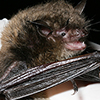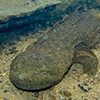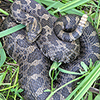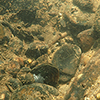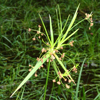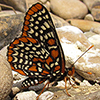Conservation Science
Protecting Pennsylvania's Plants and Animals
Species at Risk:
Forest Birds
Nearly 60% of Pennsylvania’s landscape consists of forests that provide essential habitat to a diversity of wildlife, including birds. In fact, more than half of Pennsylvania’s breeding birds are dependent on large, intact forests. Birds face many threats, but likely the most severe threat to forest interior bird populations is the fragmentation and loss of forested land due to energy and land development. The Western Pennsylvania Conservancy is proactively addressing the issues facing forest birds by protecting important high quality forests, conducting science-driven ecological studies of priority bird species and their habitats, and assembling powerful conservation partnerships.
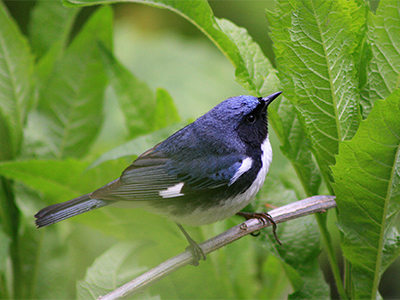
Black-throated blue warbler
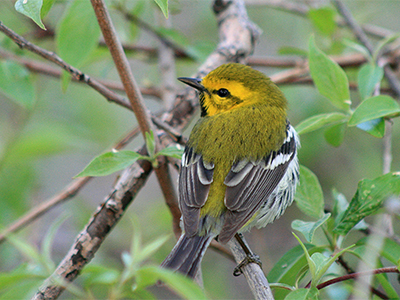
Black-throated green warbler
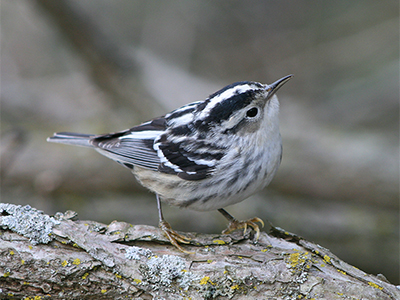
Black and white warbler
Photos by David Yeany.
Forest Interior Birds
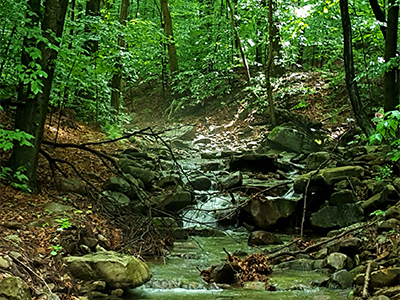
Forest interior birds are a particular group of eastern forest birds that require large, mature forests to maintain populations. A variety of species rely on these habitats, including warblers, thrushes, vireos, flycatchers, and tanagers .Of the nearly 110 species of forest-dependent breeding birds in Pennsylvania, approximately 40 require interior forest to maintain healthy populations.
Many forest interior bird species are Neotropical migratory songbirds, such as Swainson’s thrush, black-throated blue warbler, and scarlet tanager. Others are common resident species like barred owl, hairy woodpecker, and broad-winged hawk.
Threats
Since 1970 we have lost nearly 3 billion birds across North America; almost a 30% population decline across all bird species (https://www.3billionbirds.org/findings). Birds face unprecedented, widespread threats including predation from outdoor cats, window collisions, and broadcast spraying of insecticides. While these factors result in billions of measurable bird mortalities each year, the most significant cause of bird population declines is habitat loss, fragmentation, and degradation of both their summer breeding grounds in the U.S. and their winter homes in South and Central America.
Forest interior birds, in particular, thrive best in large tracts of contiguous forest, making them very vulnerable to the impacts of habitat loss and fragmentation. When forests are fragmented by development, these birds suffer from “edge effects.” When roads, pipelines, buildings or other man-made features are built on forested land, these negative effects will extend about 100 meters into the forest. Edge effects not only reduce a bird’s core habitat, but also increase
nest predation, brood parasitism by brown-headed cowbirds, and unsuitable fluctuations in environmental conditions like temperature, humidity and wind exposure.
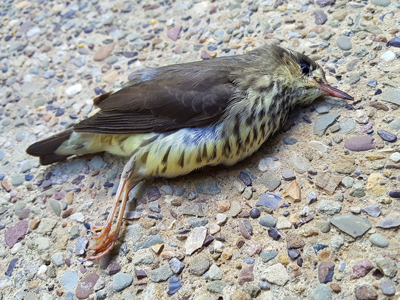
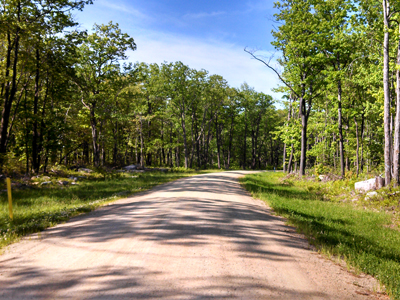
Conservation
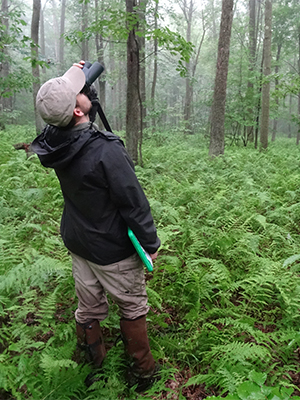 Many forest interior birds have high conservation priority. They are listed as at-risk by Partners in Flight, the U.S. Fish and Wildlife Service as Birds of Conservation Concern and the Pennsylvania Natural Heritage Program.
Many forest interior birds have high conservation priority. They are listed as at-risk by Partners in Flight, the U.S. Fish and Wildlife Service as Birds of Conservation Concern and the Pennsylvania Natural Heritage Program.
The 2015 Pennsylvania Wildlife Action Plan
features 90 bird species that are identified as Species of Greatest Conservation Need (SGCN). Nearly a quarter of these SGCN are forest interior birds. In recent decades, some species have had sharp declines, such as (eastern whip-poor-will (-42 %), Kentucky warbler (-29%), and cerulean warbler (-7%) (2nd PA BBA, Wilson et al. 2012). Others species, like the Canada warbler and wood thrush, are at-risk or declining in population across their continental range.
Still other forest interior birds may have fairly stable populations, but because Pennsylvania supports a high percentage of their global population, we have a high responsibility for their conservation. For example, 17% of scarlet tanagers, worldwide, breed in Pennsylvania and this high concentration makes the species a conservation priority. For other species in the state, there is high concern due to their environmental sensitivities, such as the stream-dwelling Louisiana waterthrush, which is adversely affected by development impacts to water quality.
Forest Bird Studies
The Pennsylvania Natural Heritage Program takes a proactive approach to learn more about the needs of Pennsylvania’s forest interior birds and their habitats.
Shale Gas Assessments
Our shale gas assessments focus on the effects of energy development on forest interior birds. In particular, this study determined the ways in which forest interior birds and other at-risk species are responding to higher levels of disturbance in their habitats.
We found that forest interior birds like black-throated green warbler, black-and-white warbler, and hermit thrush respond negatively when different types of habitat disturbance accumulate - for example, if recent logging, canopy disturbance, invasive plants, and heavy deer herbivory all occur in the same forest. As these disturbance levels increase, forest quality is greatly reduced, and bird communities lose their natural distinctiveness. We call this loss of biodiversity biotic homogenization. It occurs when the composition of bird species within two different forest types become virtually the same via the replacement of more specialized bird species by those that can more easily adapt to human habitat degradation. Our ongoing studies will look more closely at the direct effects of shale gas development on forest birds while continuing to investigate the conditions needed by forest interior specialists.
Habitat Relationship Studies
WPC has also examined forest interior bird habitat relationships, which connect bird populations with forest community types. These studies allow us to recommend improvements to forest habitat conservation and management.
For example, in north central Pennsylvania, our research has demonstrated the importance of different forest types for different forest interior birds. We also discovered that other habitat elements like shrub cover, snags and basal area can be better managed to benefit at-risk species. Study results point toward hemlock forests having the highest conservation value for forest interior birds compared to oak and northern hardwoods forests.
Protection of these forests will benefit species like Blackburnian warbler and winter wren. However, our oak forests also hold value for a number of high priority forest birds. For example, black-throated blue warblers benefit most from high shrub cover in Red Oak-Mixed Hardwood Forest and Dry Oak-Heath Forest. Cerulean warblers were most abundant in Dry Oak-Mixed Hardwood Forest. Still, there is much more that we can learn from additional studies like these.
High Elevation Bird Monitoring
Pennsylvania supports a unique group of high elevation wetlands known as peatlands – so called for their production of partly decayed organic material or peat. Peatlands include a variety of forested wetlands, bogs, and fens. WPC has determined there are more than 750 peatlands across the state. These peatlands support a high percentage of Pennsylvania’s forest interior bird species and bird Species of Greatest Conservation Need (SGCN). Projected climate change impacts for Pennsylvania include increased temperatures and changes in precipitation patterns which could adversely affect peatlands and the bird communities they support.
WPC has monitored peatland bird communities as part of a larger conservation research project to learn more about these important ecosystems and to keep tabs on climate related changes. Some of the most important peatland communities for forest birds include Hemlock Palustrine Forest, Red Spruce Palustrine Forest, and Black Spruce – Tamarack Peatlands. Several bird species can only be found breeding in these types of habitats, including white-throated sparrow, blackpoll warbler, yellow-bellied flycatcher, Nashville warbler, and northern waterthrush. Our monitoring shows that peatland bird communities with higher boreal affinity are also more vulnerable to negative climate change impacts. In the coming years, it will be important to keep monitoring peatland habitats, maintain undegraded conditions, and buffer these sites as much as possible from the effects of a changing climate.
Partnerships
WPC is a founding member of the Allegheny Bird Conservation Alliance, a strategic partnership among local and national conservation organizations who have a strong focus on the conservation of birds. Our involvement in this coalition has enabled us to collaborate on projects related to bird-window collisions, local habitat restoration and conservation education related to forest birds. Thanks to the establishment of the ABCA and its projects, Pittsburgh was recognized as an Urban Bird Treaty City by the U.S. Fish and Wildlife Service in 2015.
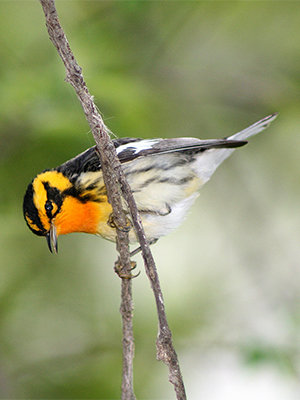
Blackburnian warbler, Photo by David Yeany

